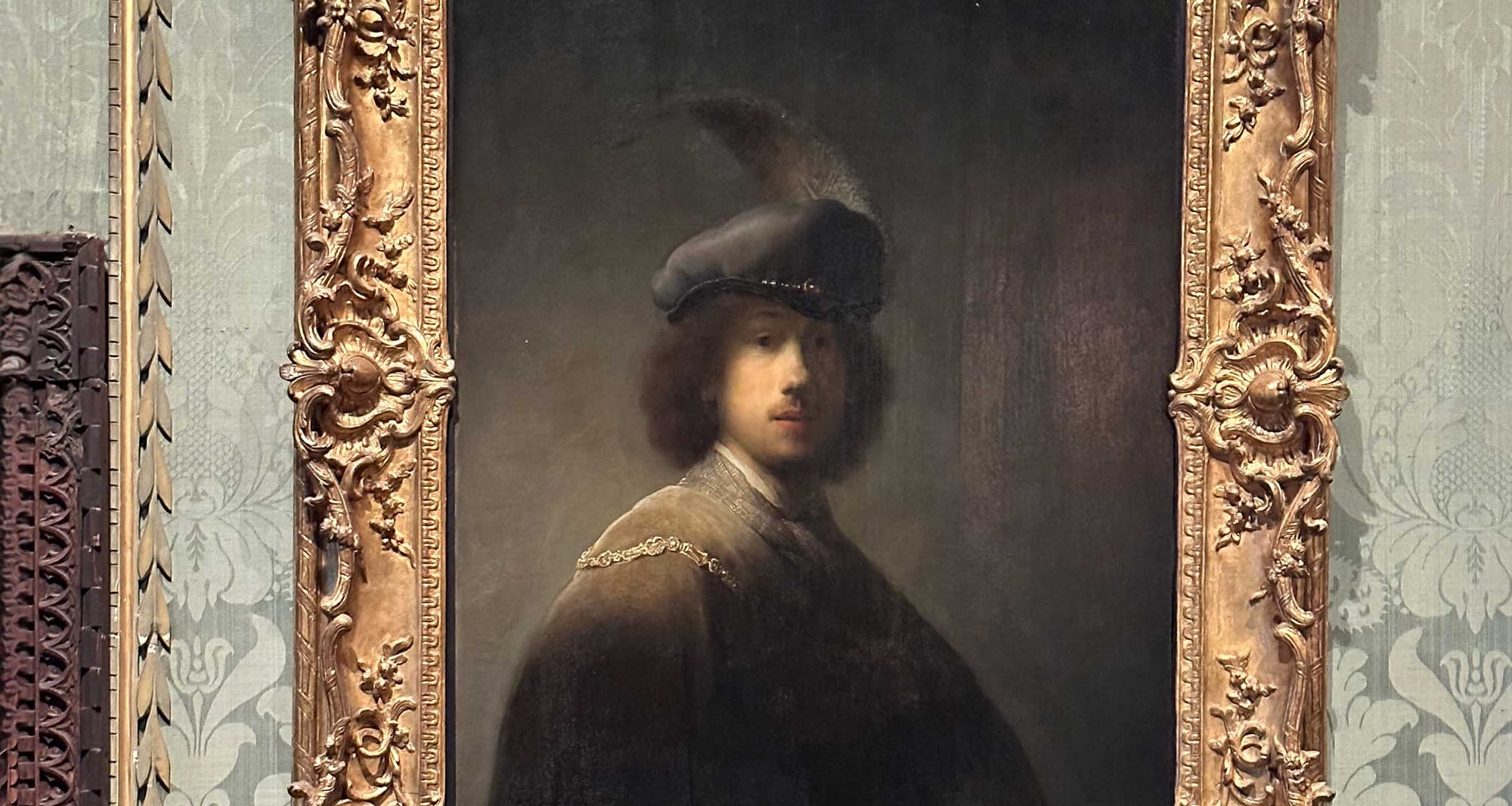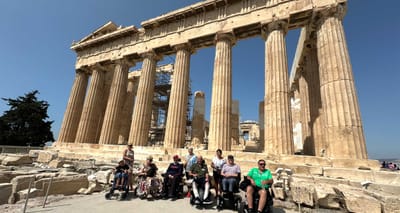“Life etches itself onto our faces as we grow older, showing our violence, excesses or kindnesses.”
—Rembrandt
Hey, everybody!
Earlier this week, I spent some time looking upon the 23-year-old artist Rembrandt Harmenszoon van Rijn, depicted in the self-portrait featured above, which now hangs in the Dutch Room of Boston’s Isabella Stewart Gardner Museum. Painted in 1628, the masterwork is one of more than 80 of the artist’s self-portraits that are known to exist.
For those who have read the book, The Gardner Heist: The True Story of the World’s Largest Unsolved Art Theft, you may recall that three paintings were stolen from the museum’s Dutch Room on the morning after St. Patrick’s Day in 1990 — Vermeer’s “The Concert,” Flinck’s “Landscape With An Obelisk,” and Rembrandt’s “Christ In The Storm On The Sea Of Galilee” have not been seen in more than 30 years. It is a miracle that the artist’s self-portrait, one of his earliest, was left untouched during a robbery that saw a total of 13 works of art lost.
While certainly not unique to me, Rembrandt has long been one of my favorite artists. I’ve been fortunate to view his works in museums around the world, and I’ve made it a point to seek out his self-portraits. You’ll find the largest collections of those paintings in Amsterdam’s Rijksmuseum (unsurprisingly) and the National Gallery in London. An old friend, who studied art history at university, once shared the Rembrandt quote I’ve included in this newsletter — upon hearing it, I was inspired with a particular curiosity to trace the development of his self-portraiture… I wonder, do the marks and wrinkles that begin to appear on his aged face in later works reflect a life of violence, excesses, or kindness?
This reflection leads me to three things I’d like to share.
First, I’ve written an article about the key to unlocking discounted admission to your local museums like the Isabella Stewart Gardner. You might already hold the key, either in your wallet, purse or even on your smartphone. Find the key, use it, and you’ll save a lot of money when visiting museums and other tourist attractions.
Second — I’m going to be a photographer’s subject today! As I work to update my free accessible travel guide to the City of Boston, I thought it would be good to appear in a few photos. My selfie game isn’t strong (I’m no Rembrandt), so I’ll be exploring the city today with a photographer who was recommended to me. It will be my first professional photo shoot since I booked a photographer and a tour guide in Rio de Janeiro through Airbnb (did you know that’s possible?).
Third — A hint. I’m getting closer to announcing the destination and dates for a 2024 Wheelchair Travel Group Trip — the news will first be sent to those who have upgraded to a paid newsletter subscription. The hint is this: a museum in the destination city is home to a Rembrandt self-portrait (it’s not Amsterdam or London this time, but I do plan to host group tours there in the future).
Looking ahead: I’m currently in the midst of a couple of (much needed) weeks at home, but I’ve been keeping very busy. In the next two weeks, look out for a survey invitation (it’s my Accessible Travel Study, which runs every two years), as well as invites to at least two more virtual events and a giveaway!
Below, find a handful of new articles that were published to the blog this week linked below (including a guest post from a generous reader).
Talk to you next week and enjoy the last weekend of October,
— John
Latest Accessible Travel Articles

Bus, Train AND Subway? My Wheelchair Accessible Trip from Lake Tahoe to San Francisco
It took three modes of transportation — bus, train and subway — to travel from Lake Tahoe to San Francisco, but it was affordable and wheelchair accessible! See how I put it all together and how much it cost.

Checking in on Wheelchair Damage: How Airlines Are Doing This Year
With airline wheelchair damage statistics now available for the first 8 months of 2023, how are carriers handling passengers' mobility devices? Some have improved, but 5 airlines have seen damage rates increase.
See which airlines are best & worst

Guest Post: Taking My First Long Distance Trip in Nearly a Decade
Alan, who has Duchenne Muscular Dystrophy and uses a power wheelchair, writes about his first time traveling far from home in many years.
In Case You Missed It

No Accessible Airplane Lavatory? Wheelchair Users Should Pack This Item to Prevent a Bathroom Disaster
Airplanes lack accessible toilets for disabled passengers, but this tool has prevented disaster and allowed me to relieve myself in the air.
Check out these articles too:
- Accessible Diving at Great Barrier Reef, Hot Air Balloon Rides and more — Round-up of accessible travel news, including a company that makes diving down to see the Great Barrier Reef accessible to many wheelchair users, plus wheelchair accessible hot air balloon rides and other big stories.
- Ranking the World’s Top Tourist Traps — USA Today has ranked the world's top 100 tourist traps, but the list leaves more questions than answers — Like what is a tourist trap, anyway?
- The Big Dig: How America’s 2nd Largest Infrastructure Projects Transformed Downtown Boston into an Accessible Gateway — Boston's Big Dig sent a major highway underground and in its place rose a premier urban park that is an accessible gateway to the city.















